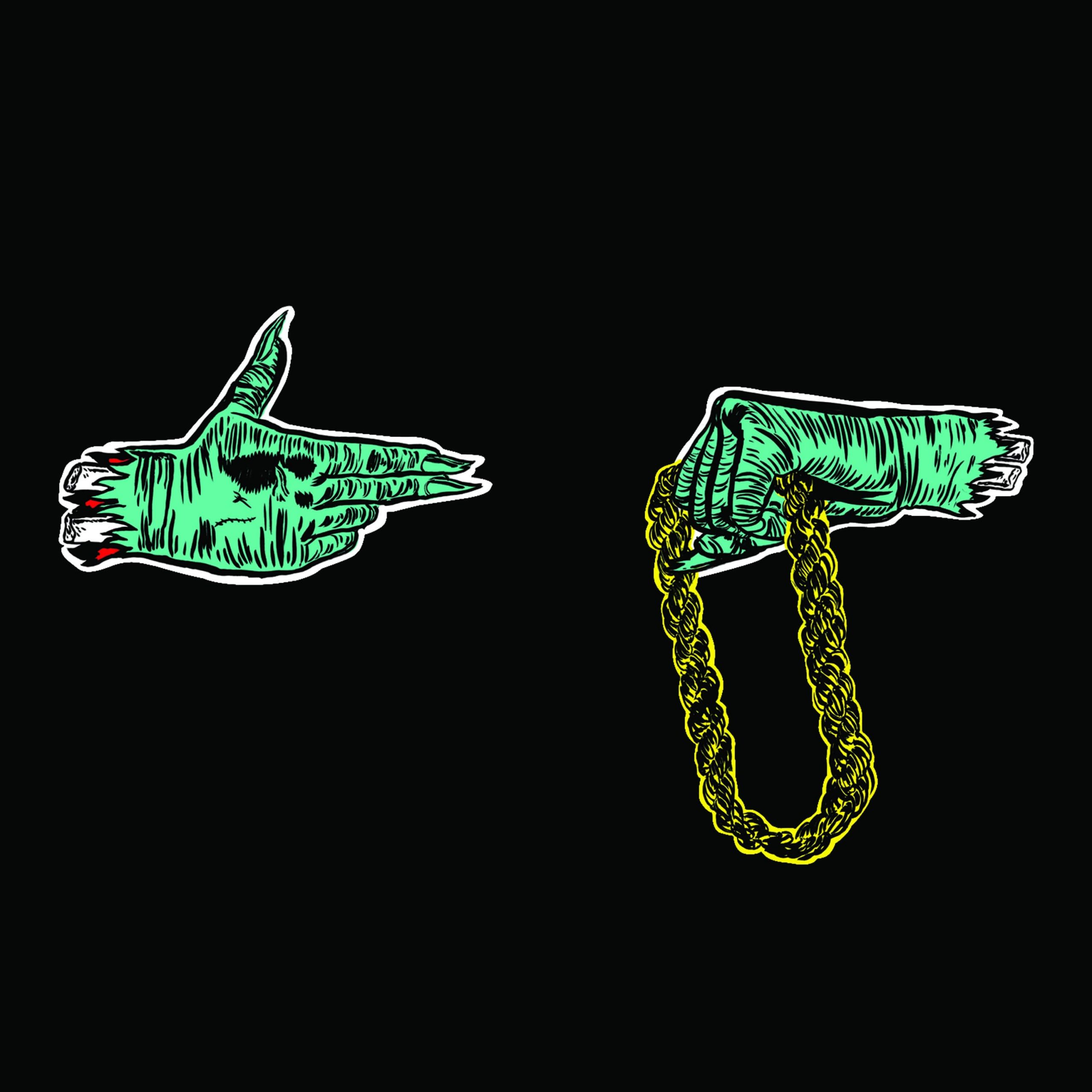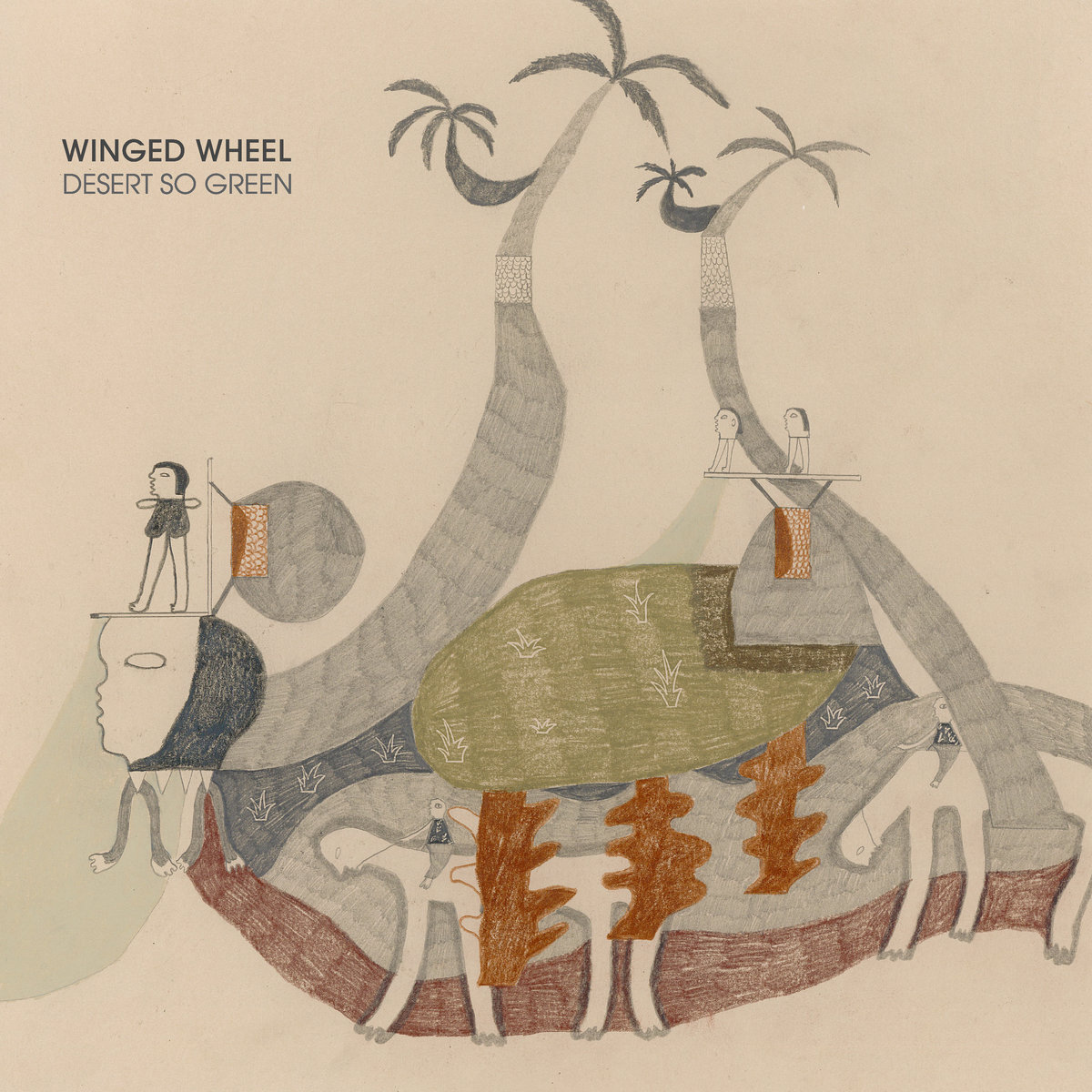- Fool's Gold/Big Dada
- 2013
It starts with… a tambourine? "Run The Jewels," by Run The Jewels, from the album Run The Jewels, opens up the first installment in one of the past decade's most action-packed franchises. There was some well-known prologue before El-P and Killer Mike joined forces as this new entity, but as the eponymous track drones into earshot — like a Godzilla-scale monster waking up, ushering us into the kind of digital dystopia El-P built his legend on — we're greeted with a distinctly analog, old-fashioned form of percussion. It's the sound of Run The Jewels immediately going off-script, breaking type seconds into the album that cemented their signature style. Soon, the fundamentals of RTJ start coming into focus, as digital bass-bombs destabilize the ground beneath your feet and the architect of the beat exclaims, "Oh shit, what the hell have we done? It's alive, and it's hungry as fuck." For the next half-hour — really, for the next 10 years — this two-headed beast would eat.
The Run The Jewels origin story has been told so many times that it's basically mythology at this point, which makes sense because the project is what finally turned perennial underdogs Michael Render and Jaime Meline into demigods. To satisfy my completist impulse, it went a little like this: After years in the trenches, longtime Dungeon Family associate Killer Mike signed on to make an album for Adult Swim's Williams Street label in 2011 and said he wanted to do something like AmeriKKKKa's Most Wanted, the incendiary record that Ice Cube recorded with the Bomb Squad in 1990. Adult Swim's Jason DeMarco recommended El-P, the Company Flow veteran and founder of the massively influential Definitive Jux label, to produce it. This led to a then-wild merger of worlds, as one of the leading lights of rap's avant-garde underground found a kindred spirit in the mainstream-adjacent Dirty South. Mike's resulting R.A.P. Music, released a week apart from El-P's own Cancer 4 Cure, sparked a creative revolution for both rappers, and they decided there was no reason to limit this chemistry to a one-off collab.
Ten years ago today, they unveiled their first album as Run The Jewels. It was released as a free download on the Fool's Gold website, near the end of the moment when such a practice was commonplace. That's one of many details that speaks to the timeliness of the project, the way circumstances created a perfect storm for Run The Jewels to flourish. Killer Mike and El-P teamed up at the tail end of rap's blog era, when free downloads proliferated at both mixtape hubs like Datpiff and file hosting sites like Megaupload, when hype could still be built one Wordpress post at a time. The blogs had given rise to stars like Drake and Kendrick Lamar, whose artful and accessible take on rap had grabbed the attention of indie rock listeners, creating an audience overlap that mirrored the demographic marriage at the core of RTJ. Meanwhile, artists from Death Grips to Kanye West to Tyler, The Creator were messing around with noisy, experimental fare not so different from the industrial-grade clangor El-P had been whipping up for years. There was a lane opening up for just such an explosive, festival-ready hip-hop operation as this.
Run The Jewels sauntered into that lane with the utmost confidence. "My name is Michael Render and we are the new Avengers," Mike announced over the contagious discordant groove of "Get It," after declaring within the guitar-strewn percolations of "Sea Legs" that "your idols all are my rivals." Amidst the video-game blips of his post-apocalyptic "36" Chain" beat, El snarls, "I walk around like I got a 36" chain" — not that he actually has one, just that he doesn't need one to strut like he's the champion of the world. They backed up the braggadocio with some of the hardest bars of 2013, inspired volatile production, and a remarkable back-and-forth camaraderie that called back to the roots of hip-hop. It was music that could appeal to old heads as well as young hypebeasts who were growing tired of Odd Future.
The rapping on Run The Jewels is consistently, face-scrunchingly great. My personal favorite line might be Killer Mike's sequence from "Job Well Done," "Woo, they done let that fuckin' Mike out/ It's like Tyson in the '80s/ N***a, snap and punch your lights out/ It's like Tyson in the '90s/ If I'm losing, take a bite out." But don't sleep on El, on the same track: "At the least, we are the most beef and broc on your fuckin' block/ The bass make a whale off of the coast scream, 'Ya'll gotta stop!'" Often, they delivered these lyrics over skronking, clattering beats that sounded like cyborgs built from scrapyard metal. But if El-P's sonic signature was unmistakable, it was versatile enough to manifest as the sci-fi synth-funk of "Ddfh," the hyperactive flicker of "No Come Down," and the spacious, ominous slow-creep of closer "A Christmas Fucking Miracle." In the words of Mr. Render, "Producer gave me a beat, said it's the beat of the year/ I said El-P didn't do it, so get the hell out of here."
As fresh as RTJ felt in that moment, they were also part of a lineage of sorts, one they telegraphed through guest spots like Big Boi's casually commanding performance on the violently shimmering "Banana Clipper" or Prince Paul's appearance as Chest Rockwell on "Twin Hype Back." Those guys had both reached the summit by inflating quirky charisma to blockbuster scale, then retreated into sustainable cult stardom. Run The Jewels existed in that same space where the former OutKast member and De La Soul producer found themselves: not chart-topping, culture-saturating famous, but critically acclaimed and backed by an enthusiastic coalition.
In the years to come, that coalition would only grow. These guys seemed to really love each other, and their listeners reflected back that love. By the time I profiled Run The Jewels in 2014, they were the hottest thing going in indie music, routinely smashing festival sets and topping year-end lists with Run The Jewels 2. As their music continued to balloon in scope with Run The Jewels 3, it seemed to take on some bloat, costing them some of their cachet in the process. Yet when the stunning RTJ4 arrived at the height of the George Floyd protests, it was a reminder of what so many of us had loved about this duo in the first place.
It's easy to take them for granted now, at a time when Run The Jewels feels like an institution that has always existed. It's easy to scoff at them as hip-hop for hipsters that has morphed into a new kind of classic rock. None of that is wrong, necessarily, but it undersells just how electric the combination of Killer Mike and El-P has always been and how unlikely their partnership seemed at the start. What they captured in that moment was special, and hardly inevitable, and they've largely preserved it even as the landscape around them has changed so much. I'm looking forward to seeing what they do with their next decade.
We rely on reader subscriptions to deliver articles like the one you're reading. Become a member and help support independent media!






